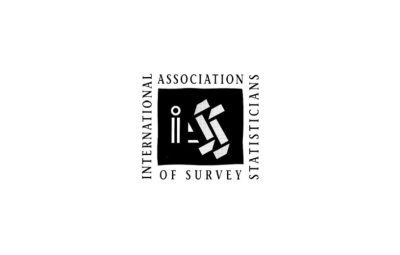C.R. Rao, a professor whose work more than 75 years ago continues to exert a profound influence on science, has been awarded the 2023 International Prize in Statistics.
In his remarkable 1945 paper published in the Bulletin of the Calcutta Mathematical Society, Calyampudi Radhakrishna (C.R.) Rao demonstrated three fundamental results that paved the way for the modern field of statistics and provided statistical tools heavily used in science today.
The first, now known as the Cramér-Rao lower bound, provides a means for knowing when a method for estimating a quantity is as good as any method can be. The second result, named the Rao-Blackwell Theorem (because it was discovered independently by eminent statistician David Blackwell), provides a means for transforming an estimate into a better—in fact, an optimal—estimate. Together, these results form a foundation on which much of statistics is built. And the third result provided insights that pioneered a new interdisciplinary field that has flourished as “information geometry.” Combined, these results help scientists more efficiently extract information from data.
Information geometry has recently been used to aid the understanding and optimization of Higgs boson measurements at the Large Hadron Collider, the world’s largest and most powerful particle accelerator. It has also found applications in recent research on radars and antennas and contributed significantly to advancements in artificial intelligence, data science, signal processing, shape classification, and image segregation
The first, now known as the Cramér-Rao lower bound, provides a means for knowing when a method for estimating a quantity is as good as any method can be. The second result, named the Rao-Blackwell Theorem (because it was discovered independently by eminent statistician David Blackwell), provides a means for transforming an estimate into a better—in fact, an optimal—estimate. Together, these results form a foundation on which much of statistics is built. And the third result provided insights that pioneered a new interdisciplinary field that has flourished as “information geometry.” Combined, these results help scientists more efficiently extract information from data.
Information geometry has recently been used to aid the understanding and optimization of Higgs boson measurements at the Large Hadron Collider, the world’s largest and most powerful particle accelerator. It has also found applications in recent research on radars and antennas and contributed significantly to advancements in artificial intelligence, data science, signal processing, shape classification, and image segregation.
The Rao-Blackwell process has been applied to stereology, particle filtering, and computational econometrics, among others, while the Cramér-Rao lower bound is of great importance in such diverse fields as signal processing, spectroscopy, radar systems, multiple image radiography, risk analysis, and quantum physics.
“In awarding this prize, we celebrate the monumental work by C.R. Rao that not only revolutionized statistical thinking in its time but also continues to exert enormous influence on human understanding of science across a wide spectrum of disciplines,” said Guy Nason, chair of the International Prize in Statistics Foundation.
The International Prize in Statistics is awarded every two years by a collaboration among five leading international statistics organizations. The prize recognizes a major achievement by an individual or team in the statistics field, particularly an achievement of powerful and original ideas that has led to practical applications and breakthroughs in other disciplines.
Rao will receive the prize, which comes with an $80,000 award, this July at the biennial International Statistical Institute World Statistics Congress in Ottawa, Ontario, Canada.
The first International Prize in Statistics was awarded in 2017 to David R. Cox for the development of the Cox proportional hazards model, which allows researchers to investigate patient survival rates in complex studies. Bradley Efron received the award in 2019 for a statistical method known as the bootstrap, a clever computational method for assessing uncertainty in applied statistics. Nan Laird received the award in 2021 for the development of powerful methods that have made possible the analysis of complex longitudinal studies.
More information about the life and work of Rao can be found in many places, including the following:
- https://mathshistory.st-andrews.ac.uk/Biographies/Rao/
- https://www.psa.gov.in/article/prof-calyampudi-radhakrishna-rao/347
- https://en.wikipedia.org/wiki/C._R._Rao
--------------------------------------------------------
About the Prize
Awarded biennially at the ISI World Statistics Congress, the International Prize in Statistics is stewarded and managed by a foundation comprising representatives of the five major statistical organizations working cooperatively to develop this prestigious award: the American Statistical Association; Institute of Mathematical Statistics; International Biometric Society; International Statistical Institute; and Royal Statistical Society.
Mirroring the successful approach employed by other prestigious scientific prizes, the International Prize in Statistics recognizes an individual statistician or team of statisticians (groups of individuals working on similar ideas as teams of individuals or organizations) for “a single work or body of work.” This approach better enables the foundation to present the recognized work of each honoree to the public in a way that enhances understanding of the depth and scope of statistics and engenders widespread appreciation for its beneficial impact on modern life.
Powerful and original ideas are the focus of the award, but a corollary practical and positive effect on the world’s population is factored into the selection criteria. Examples include implementing statistical surveys or analyses or developing groundbreaking software systems of great benefit to mankind.
The ultimate goal of the International Prize in Statistics is to enhance public understanding of the depth and scope of statistics.
Contributions
The five major statistical organizations leading this effort—the American Statistical Association, Institute of Mathematical Statistics, International Biometric Society, International Statistical Institute, and Royal Statistical Society—have established an international statistics prize to serve the dual, interrelated purposes of:
- Recognizing a statistician for his or her work that advances the public welfare
- Educating the public globally on the significant and ubiquitous statistics innovations that have greatly improved modern life and public welfare
Never before has statistics experienced the convergence of factors—the media’s focus on big data, rising interest by young people in statistics, across-the-board support from all the major statistical organizations, and a strong desire and commitment among statisticians to increase the public profile of the statistical profession—that will be instrumental in successfully launching an internationally recognized prize.
To ensure we grasp this opportunity to put statistics at the forefront of discussions about the scientific advances of our day, several of the organizing societies listed above have contributed funds to ensure a prize of at least $80,000 can be awarded every other year.
Our goal is to offer a much larger prize, potentially as large as other major scientific awards, and we seek the financial commitment of individuals, businesses, and organizations to significantly increase the size of this award and help create an aura to match that of other prestigious scientific awards.
Nominations
Nominations for the 2025 International Prize in Statistics will open in early January 2024.
The 2023 International Prize in Statistics was announced on April 1, 2023 and will be presented at the ISI World Statistics Congress in July 2023.
Points to Consider
- The prize is awarded for a major achievement developed through a single contribution or multiple contributions over a period of time.
- The prize is meant to recognize powerful ideas that have led to breakthroughs in statistics and data science and demonstrated impact on applications, methodology, theory, or practice.
- The prize can be awarded to individuals, teams, or organizations.
- The prize is presented at a major international meeting of statisticians and supported by ceremonies and intellectual activities that enhance the visibility of the award.
- Generally, the prize is awarded to individuals, but groups of individuals working on similar ideas—or even teams of individuals or organizations—can be recognized.
- The recipient(s) must be living at the time of selection for the award.
- Information about the award will be communicated to the public in a way that will enhance public understanding of the depth and scope of statistical science and its impact on modern life. Part of this information is captured through the nomination process.
Nomination Packet
A nomination packet consists of the following:
- Contact information for the person(s) being nominated and the person making the nomination
- The nomination form and all the information requested in it, which includes the following:
- CV(s) of the nominee(s)
- Four letters of reference that focus primarily on the contribution, its importance, and impact. Other information, such as descriptions of the nominee’s contributions to other areas, their professional leadership, mentoring, etc., is fine, but should be brief.
- Description of the relationship between the nominator and nominee(s)
- Title and brief description of the nomination (major contribution/achievement)
- Description of importance and impact of the contribution (max 1,200 words, explaining the contributions of the nominee(s) in terms understandable to a nonspecialist)
- Draft citation of the contribution (max 150 words)
The committee reserves the right to contact the nominator and writers of the support letters to seek additional information and insight.
Unsuccessful nominations are carried over for one selection cycle (two years). Nominators are responsible for updating their nomination if they so desire. The deadline for updating is the same as the deadline for nominations.
We will announce the new deadline date when we have that information!
------------------------------------------------------
Previous Winners
~ 2021 ~
Nan Laird
Nan Laird, Harvey V. Fineberg Professor of Biostatistics (Emerita) at Harvard T.H. Chan School of Public Health, is recognized for her work on powerful methods that gave researchers the tools they needed to answer important questions in health, medicine, psychology and more. This jump-started a field known as “random effects modeling for longitudinal data analysis,” and the methods Laird introduced in 1982 are still the most widely used techniques in both observational studies and clinical trials today.
~ 2018 ~
Bradley Efron
Bradley Efron, professor of statistics and biomedical data science at Stanford University, is recognized for the "bootstrap," a method he developed in 1977 for assessing the uncertainty of scientific results that has had extraordinary impact across many scientific fields. With the bootstrap, scientists are able to learn from limited data in a simple way that enables them to assess the uncertainty of their findings.
~ 2016 ~
Sir David Cox
Sir David Cox is recognized for his 1972 Journal of the Royal Statistical Society, series B, paper in which he developed the proportional hazards model that today bears his name. The Cox Model is widely used in the analysis of survival data and enables researchers to more easily identify the risks of specific factors for mortality or other survival outcomes among groups of patients with very different characteristics.




